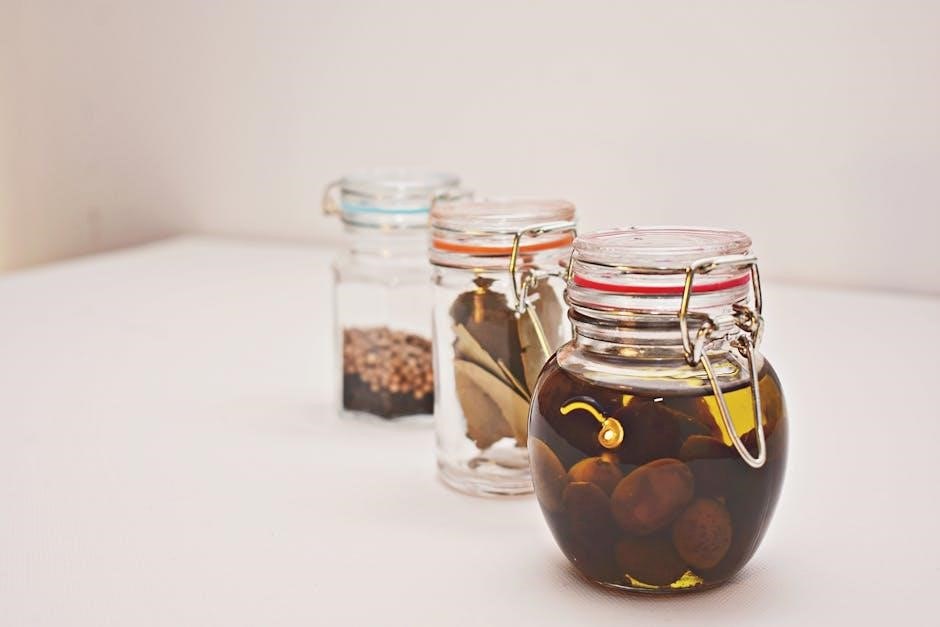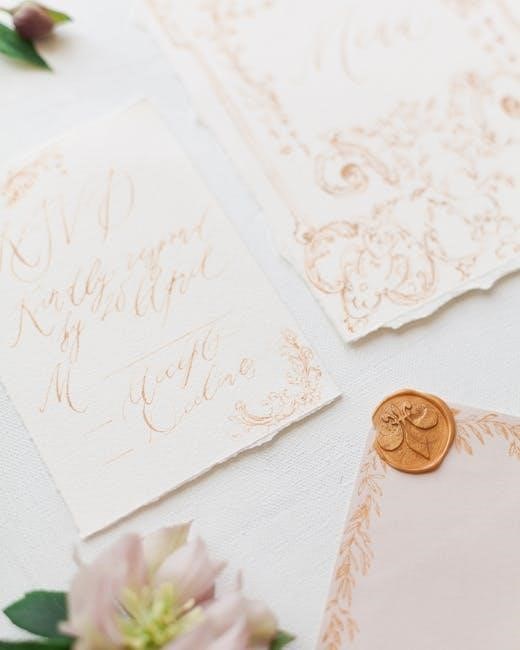Sno-Seal is a premium waterproofing product designed to protect and condition leather boots․ Its primary ingredient, natural beeswax, provides durable water resistance while maintaining leather suppleness․ Proper application ensures long-lasting protection․
What is Sno-Seal?
Sno-Seal is a waterproofing product primarily made from natural beeswax, designed to protect and condition leather goods like boots․ It contains additional natural ingredients and a solvent that lowers the wax’s melting point for easier application․ Once applied and dried, the solvent evaporates, leaving a protective wax layer that repels water and moisturizes the leather․ Sno-Seal is widely used to enhance durability and maintain the appearance of leather items, making them resistant to water and wear․ Its effectiveness has made it a popular choice for outdoor enthusiasts and those seeking long-lasting leather protection․ Regular use ensures optimal results․
Importance of Proper Application
Proper application of Sno-Seal is crucial for achieving optimal waterproofing and leather protection․ Clean, dry boots ensure the wax penetrates evenly, while heating the leather opens pores for better absorption․ Skipping steps like preheating or applying too little can result in uneven coverage and reduced effectiveness․ Following instructions carefully ensures a strong barrier against water and wear, extending the life of your boots․ Proper technique also prevents issues like darkening or excess buildup, making it essential for both functionality and aesthetics․ Consistent, thorough application guarantees long-lasting protection and maintains the quality of your leather goods․ Attention to detail is key for the best results․
Benefits of Using Sno-Seal
Sno-Seal offers exceptional waterproofing, preserving leather integrity and preventing water damage․ Its natural beeswax formula conditions and softens leather, enhancing flexibility and durability․ Regular use extends boot life, resisting cracks and fading․ The wax creates a breathable barrier, allowing moisture to escape while keeping water out․ It darkens leather beautifully, adding a rich, protective finish․ Sno-Seal is ideal for harsh weather, making it a reliable choice for outdoor enthusiasts․ Proper application ensures boots remain supple and resistant to elements, providing long-term protection and maintaining their appearance․ It’s a trusted solution for safeguarding valuable leather footwear․

Materials and Tools Needed
Essential items include Sno-Seal, clean boots, a heat source, and a cloth․ Optional tools are a hair dryer, oven, and gloves for efficient application and protection․
Essential Items for Application
The primary essential items for applying Sno-Seal include the product itself, a pair of clean, dry boots, and a soft cloth for application․ A heat source, such as an oven or hair dryer, is crucial to warm the leather, enhancing wax absorption․ Additionally, gloves are recommended to protect hands from wax residue․ Ensure the boots are free from dirt, oils, or previous finishes to maximize the effectiveness of the Sno-Seal treatment․ These basics ensure a proper and successful application process․
Optional Tools for Best Results
While not mandatory, several tools can enhance the Sno-Seal application process․ A heat lamp or sunny window provides consistent warmth for leather preparation․ A utility knife helps remove stubborn old finishes, and fine-grit sandpaper smooths rough areas․ For even coverage, a small, stiff-bristle brush can apply Sno-Seal into seams and creases․ A silicone mat protects work surfaces from wax spills․ A well-ventilated workspace, like a garage or outdoor area, minimizes odor issues․ These tools contribute to a more efficient and effective waterproofing experience, ensuring your boots receive optimal protection․

Preparing Your Boots for Sno-Seal
Proper preparation ensures optimal Sno-Seal absorption․ Clean boots thoroughly with soap and water, removing dirt and old finishes․ Dry completely before heating to enhance wax absorption․
Cleaning and Drying Boots
Thoroughly clean boots with mild soap and water to remove dirt, oils, and old finishes․ Scrub gently with a soft brush, especially around seams and eyelets․ Rinse completely to ensure no residue remains․ Pat dry with a clean cloth and allow boots to air dry naturally, away from direct heat, to prevent cracking․ Proper drying is crucial for Sno-Seal absorption․ Avoid using harsh chemicals or conditioners, as they may interfere with the wax’s effectiveness․ Clean, dry boots ensure a strong bond with Sno-Seal, enhancing waterproofing and leather protection․ This step is essential for optimal results․
Removing Existing Finishes
Before applying Sno-Seal, remove any existing finishes, polishes, or waterproofing treatments from the leather․ Use a leather cleaner or saddle soap to gently scrub away old finishes, paying special attention to seams and creases․ Rinse thoroughly with clean water and let the boots dry completely․ Avoid using harsh chemicals, as they may damage the leather․ Once the boots are clean and dry, they are ready for Sno-Seal application․ Proper removal of old finishes ensures better absorption and adhesion of the Sno-Seal wax, maximizing its waterproofing and conditioning benefits․ This step is crucial for achieving optimal results․
Heating Boots for Better Absorption
Preheating your boots enhances the absorption of Sno-Seal․ Use a low-temperature oven (120°F), a hair dryer, or a sunny window to warm the leather․ Heat the boots until they feel warm to the touch but not hot․ Avoid overheating, as it can damage the leather or soles․ Once warmed, the leather pores open, allowing Sno-Seal to penetrate deeply; This method ensures a more even application and better protection․ After heating, apply Sno-Seal liberally, working it into the leather with your fingers or a cloth․ The heat helps the wax melt and soak in, creating a durable waterproof barrier․

Application Methods
Sno-Seal can be applied using an oven, hair dryer, or by hand․ Each method ensures even wax distribution and deep penetration for optimal waterproofing and durability․
Oven Method for Sno-Seal
Preheat your oven to its lowest setting, ensuring it doesn’t exceed 120°F․ Place clean, dry boots inside to warm the leather․ Remove one boot and apply Sno-Seal liberally, focusing on seams and areas prone to wear․ Return the treated boot to the oven and repeat with the other․ Alternate heating and applying until the leather absorbs the wax evenly․ Avoid excess buildup and wipe off any extra․ Let the boots cool and cure before use for maximum protection․
Hair Dryer Method
For a quicker alternative to the oven method, use a hair dryer to heat your boots․ Hold the dryer 6-8 inches away, moving it evenly to warm the leather without overheating․ Once the leather is warm, apply Sno-Seal liberally, focusing on seams and high-wear areas․ Use firm pressure to work the wax into the leather․ Repeat the process, heating and applying coats until the leather is fully saturated․ This method is less time-consuming but may require more coats for optimal protection․ Ensure the boots cool between applications to allow the wax to fully absorb․

Hand Application Technique
For a manual approach, apply Sno-Seal directly to clean, dry leather using your hands․ Scoop a generous amount and rub it firmly into the leather, focusing on seams and high-wear areas․ Use circular motions to work the wax deep into the pores․ Pay special attention to stitching and edges, as these areas are most prone to moisture․ Continue applying until the leather no longer absorbs the wax․ Wipe off excess with a cloth and let it dry․ This method requires elbow grease but allows precise control, ensuring a thorough application without heat․

Drying and Curing Process
Allow Sno-Seal to dry for 12-24 hours․ The wax will fully absorb into the leather, and the solvent will evaporate, leaving a waterproof and conditioned finish․
Recommended Drying Time
Allow Sno-Seal to dry for 12-24 hours after application․ During this time, the beeswax penetrates deeply into the leather, ensuring maximum protection․ Avoid using the boots during this period․
Multiple Coats for Maximum Protection
Applying multiple thin coats of Sno-Seal enhances durability and water resistance․ Start with the first coat, let it dry for 12-24 hours, then apply additional layers․ This method ensures deep penetration of the beeswax into the leather, providing long-lasting protection against harsh weather conditions․ Each coat builds upon the previous one, creating a robust barrier that preserves the leather’s suppleness and appearance․ For optimal results, repeat the process until the leather no longer absorbs the product, typically after 3-5 coats, depending on usage and wear․

Maintenance and Reapplication
Regular maintenance ensures Sno-Seal’s effectiveness․ Reapply after excessive wear or water exposure․ Clean boots before reapplication to maintain optimal protection and extend leather life․
When to Reapply Sno-Seal
Reapply Sno-Seal when boots show signs of wear or water resistance diminishes․ After extended use in wet conditions, inspect for dry spots or cracks․ If water no longer beads, it’s time to reapply․ Typically, reapplication is needed every 1-2 months, depending on usage․ Clean boots thoroughly before reapplying to ensure optimal results․ Regular maintenance extends leather life and maintains protection․ Always follow proper application steps for best outcomes․
Touching Up Worn Areas
Inspect boots regularly for worn areas, especially seams and high-wear zones․ When water no longer beads on the surface, it’s time to touch up․ Clean the areas thoroughly with a damp cloth to remove dirt and oils․ Apply a small amount of Sno-Seal, working it deeply into the leather using your fingers or a soft cloth․ Focus on areas showing signs of wear, such as cracks or dry spots․ This targeted approach prevents further damage and maintains waterproofing․ Regular touch-ups extend the life of your boots and keep them looking their best․

Common Issues and Solutions
Darkening of leather and excess Sno-Seal staining are common concerns․ Wipe off excess product with a clean cloth before it dries․ For staining, spot test first․

Darkening of Leather
One of the most common issues when using Sno-Seal is the darkening of leather․ The natural beeswax in Sno-Seal can alter the color of the leather, giving it a richer, deeper tone․ While some users embrace this change, others may find it undesirable․ To minimize darkening, test Sno-Seal on an inconspicuous area first․ Applying thin, even coats and wiping off excess product can also help reduce color alteration․ Keep in mind that Sno-Seal is designed to protect and condition, so the darkening is often a sign of the leather being properly sealed and moisturized․
Excess Sno-Seal and Staining
Excess Sno-Seal can lead to staining on surfaces or clothing if not handled properly․ When applying, use a clean cloth to wipe away any excess wax from seams and eyelets to prevent drips․ If Sno-Seal accidentally gets on fabric, act quickly by blotting the area with a damp cloth․ For stubborn stains, a mild soap solution may help remove residue․ Regular maintenance and careful application can minimize these issues, ensuring your boots are protected without causing unintended staining․ Proper technique and attention to detail are key to avoiding excess Sno-Seal problems․
Properly applying Sno-Seal ensures long-lasting waterproofing and leather protection․ Regular maintenance and careful techniques will keep your boots in excellent condition, ready for any outdoor adventure․
For optimal results, apply Sno-Seal in thin, even layers, allowing each coat to fully absorb before adding more․ Avoid overheating boots, as this can damage the leather or soles․ Regular reapplication, especially after heavy use, ensures continued waterproofing; Store boots in a cool, dry place to prevent wax from softening․ For extra durability, pay attention to high-wear areas like seams and eyelets․ Remember, consistency is key to maintaining your boots’ integrity and performance․ By following these tips, your Sno-Sealed boots will remain supple, protected, and ready for years of reliable service․ Proper care extends their lifespan significantly․ Regular maintenance with Sno-Seal is essential to uphold the protective barrier and condition of your leather boots․ Over time, wear and tear can degrade the wax coating, leaving the leather vulnerable to moisture and damage․ By reapplying Sno-Seal periodically, you ensure consistent waterproofing and prevent the formation of stubborn water spots․ This routine also helps restore the natural suppleness of the leather, keeping it from drying out or cracking․ Regular upkeep not only extends the lifespan of your boots but also maintains their appearance and performance․ Consistency in maintenance ensures your boots remain reliable and ready for any outdoor adventure․ For further guidance, explore detailed tutorials and guides on Sno-Seal application․ Visit Grant Catton’s blog or YouTube for comprehensive videos and step-by-step instructions․ For in-depth guidance, visit Grant Catton’s blog, which offers a detailed Sno-Seal application guide․ The official Sno-Seal website also provides tutorials and tips․ Additionally, YouTube features video demonstrations by experienced users, showcasing techniques for optimal results․ These resources cover preparation, application methods, and maintenance, ensuring your boots receive the best protection․ They also address common issues and offer solutions for achieving professional-grade waterproofing․ By exploring these materials, you’ll gain insights into maximizing Sno-Seal’s effectiveness and keeping your leather gear in excellent condition year-round․ YouTube offers excellent video tutorials demonstrating Sno-Seal application․ One popular video by a seasoned user details the oven method, showcasing step-by-step boot preparation and Sno-Seal application․ Another tutorial focuses on hand application techniques, emphasizing thorough coverage and absorption․ These videos provide visual guidance, helping you master techniques like warming boots and applying even coats․ They also highlight common mistakes to avoid․ Watching these tutorials complements written instructions, ensuring a flawless application process and optimal waterproofing results for your leather boots․Final Tips for Long-Lasting Protection
Importance of Regular Maintenance

Additional Resources
Recommended Reading
Video Tutorials for Reference

